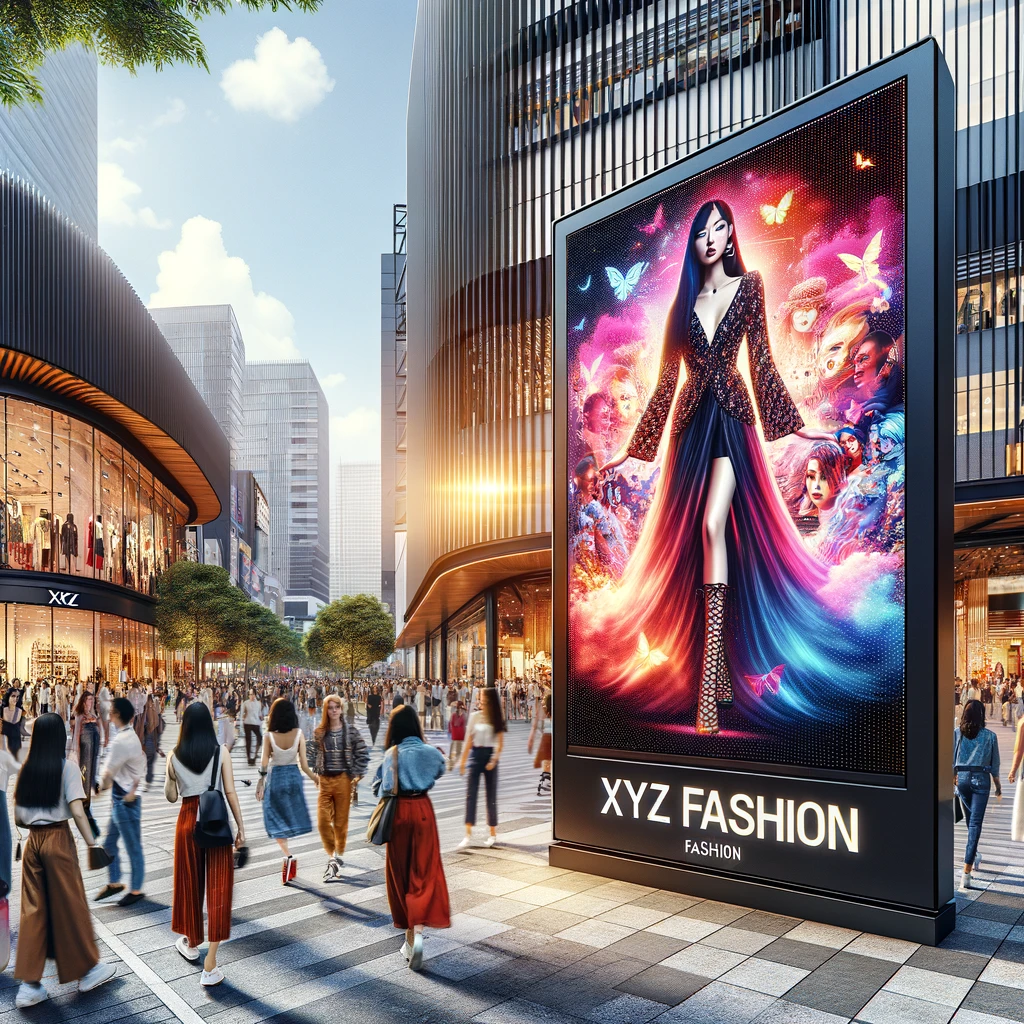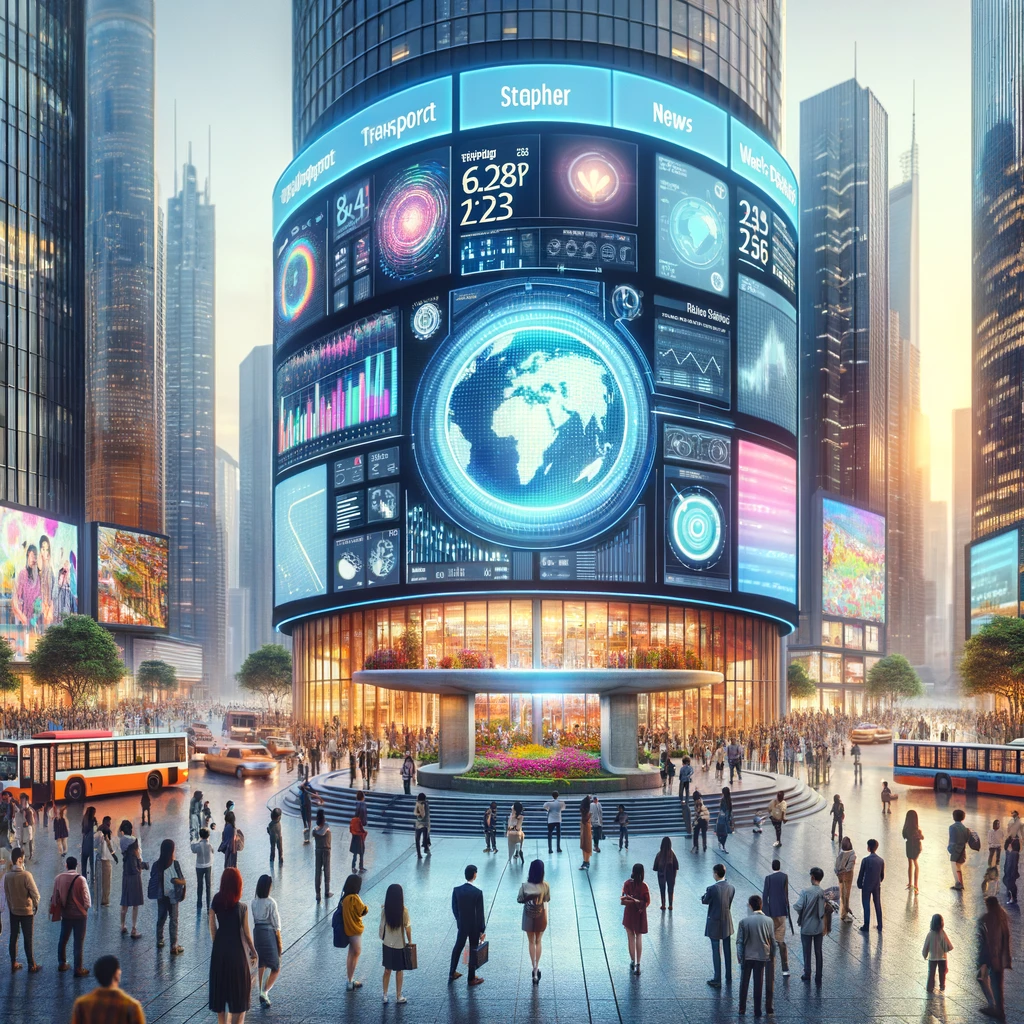Imagining the Future of Outdoor Advertising: The Impact of Large Display Technologies
In a future where outdoor advertising transcends traditional methods, large display technologies like LED screens and video walls emerge as pivotal tools. This speculative exploration delves into how different personas, representing potential buyers across various sectors, could leverage these technologies to revolutionize advertising and brand promotions.
The Entrepreneur: Small Business and Startup Advertising
Picture Sarah, an entrepreneur, utilizing a grand display in a downtown area to showcase her startup. Such technology is ideal for small businesses and startups looking to make a strong impact in a competitive market. The visibility and dynamic nature of these displays can significantly boost brand recognition and customer engagement.
The Retail Giant: Engaging Shoppers with Dynamic Displays
Visualize a retail chain, like ‘XYZ Fashion’, employing large displays in shopping malls and storefronts. This sector, including shopping malls themselves, can use grand displays for high-impact advertising and creating immersive brand experiences, attracting customers like John, a fashion enthusiast.

The Event Organizer: Promoting Events on a Large Scale
Imagine Lisa, an event organizer, using a grand display to promote a local festival. Event organizers and entertainment venues can use these technologies to increase visibility and engagement, drawing in audiences like Mike, a music enthusiast, enhancing ticket sales and event popularity.

The Restaurateur: Tempting Customers with Visual Feasts
Consider a restaurant using outdoor screens to display tantalizing images of their dishes. The food and beverage industry, including food trucks and markets, can attract customers like Emily, a food blogger, leading to increased patronage and social media exposure.
The Tech Company: Interactive Product Launches
Envision a tech company unveiling its latest product via an interactive grand display. Tech companies, especially those launching new products, can engage tech enthusiasts like Alex, providing an immersive experience that educates and excites potential customers.
The Real Estate Agent: Virtual Property Showcases
Real estate agents can use large displays for realistic virtual tours of properties, appealing to potential buyers like the Smith family. This application is particularly beneficial for real estate firms and developers looking to enhance property visibility and appeal.
The Corporate Client: Enhancing Business Spaces
Corporate clients, such as businesses looking to install video walls in their premises for informational or decorative purposes, can benefit greatly. These displays can enhance corporate lobbies, conference rooms, and make a statement in corporate events.
Conclusion
In the envisioned future, large display outdoor technologies cater to a diverse range of sectors, each with its unique advertising and promotional needs. From entrepreneurs to large corporations, the potential buyers of these technologies are as varied as their applications, offering innovative ways to connect with audiences and transform outdoor advertising into an interactive, engaging experience.

The visual representation of the scenario where the young entrepreneur, Sarah, is standing in a bustling downtown area, proudly looking at the massive LED screen displaying her startup’s innovative product. The scene captures the essence of how large display advertising can impact and inspire in a modern urban setting.
TWO CATEGORIES OF BUYERS
When it comes to large display technologies such as video walls or LED screens, the market can broadly be divided into two main categories of potential buyers: those who are likely to purchase the technology outright for long-term use, and those who would prefer to rent space on these displays for short-term advertising or content display.
Buyers Who Purchase the Technology:
Retail Businesses and Shopping Malls: These entities may purchase large displays for permanent installation to enhance the shopping experience and for long-term brand advertising.
Corporate Clients: Many corporations might invest in these technologies for their offices, lobbies, or conference rooms for presentations, brand display, and internal communications.
Educational Institutions: Schools, colleges, and universities may purchase these screens for educational purposes, announcements, and on-campus events.
Healthcare Facilities: Hospitals and clinics could buy these displays for wayfinding, patient information, and health awareness campaigns.
Transportation Hubs: Airports, train stations, and bus terminals might purchase large displays for permanent installation to show timetables, announcements, and advertisements.
Government and Public Service Entities: These might include city halls and public libraries for public information dissemination.
Event Venues and Entertainment Centers: Permanent installations for ongoing events, promotions, and audience engagement.
Buyers Who Rent Space for Content Display:
Small Businesses and Startups: These entities may prefer renting space on large displays for short-term high-impact advertising campaigns, product launches, or promotional events.
Advertising Agencies: Often these agencies rent space for their clients’ campaigns, looking for high-traffic areas to maximize exposure.
Event Organizers: For promoting specific events like festivals, concerts, or trade shows, renting space on a large display can be a cost-effective advertising strategy.
Real Estate Agents: To advertise properties and developments, especially for high-end or large-scale projects.
Tourism and Hospitality Businesses: Hotels, resorts, and tourist attractions may rent space for seasonal promotions or to target specific tourist demographics.
Local Businesses for Community Announcements: Local businesses might rent space for community-related announcements, local events, or special offers.
Freelance Marketers or Individuals: For personal announcements like birthday greetings, proposals, or congratulatory messages, especially in high-visibility areas.
For those purchasing the technology, emphasizing durability, long-term cost savings, and multi-functional use is key. Meanwhile, for those renting space, highlighting traffic demographics, display visibility, and flexible rental terms would be more appealing.








